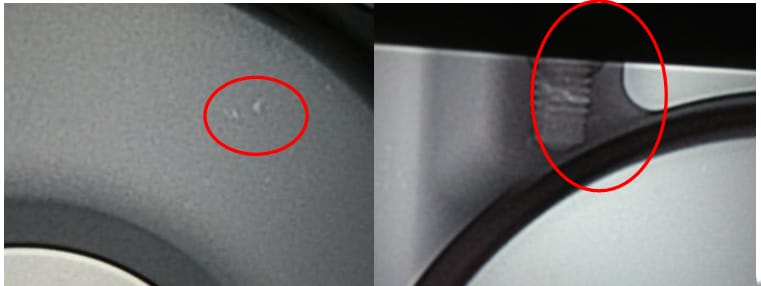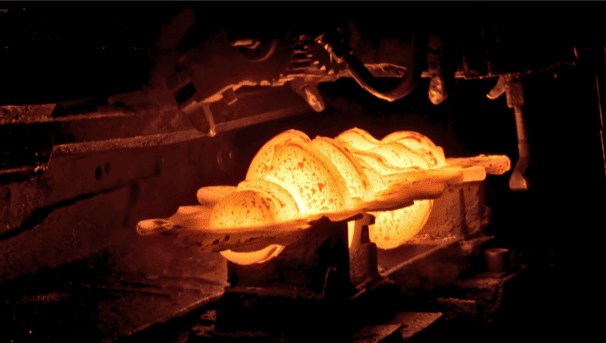Die Casting vs. Investment Casting: From Cost to Application, Everything You Need to Know!
In the field of metal manufacturing, Die Casting and Investment Casting are two widely used casting processes. Each has its own advantages and is suitable for different types of products. This article will help you understand the core differences between these two processes and provide examples of their real-world applications.
1. What Are the Main Differences Between Die Casting and Investment Casting?
| Feature | Die Casting | Investment Casting |
|---|---|---|
| Material | Mainly used for aluminum, zinc, and magnesium non-ferrous metals | Suitable for stainless steel, carbon steel, aluminum, copper, and other metals |
| Mold | Reusable metal mold | One-time-use ceramic shell mold |
| Production Volume | Suitable for mass production | Suitable for small batches and high-precision needs |
| Precision & Surface Finish | High precision, moderate surface finish | Extremely high precision, excellent surface quality |
| Cost | High mold cost but low unit cost | Low mold cost but high unit cost |
💡 Examples:
- Die Casting is suitable for car engine housings, smartwatch cases, and camera bodies, where high production volume is required.
- Investment Casting is often used for aircraft turbine blades, medical surgical instruments, and luxury watch parts, where extremely high precision and surface quality are needed.
2. Which Process is Better for Complex Designs?
Investment Casting excels in manufacturing complex and precise parts. Using wax patterns and ceramic shell molds, it enables intricate geometries such as hollow structures, thin-walled designs, and lattice components.
🔹 Examples:
- Investment Casting is used for aircraft turbine blades, which must have internal cooling channels that are difficult to achieve with Die Casting.
- Die Casting is suitable for automotive transmission housings, which are complex but have uniform wall thickness, making them ideal for mass production.
3. Which Process Has Higher Production Costs?
Die Casting requires a higher initial mold investment but is cost-effective for large-scale production, reducing unit costs. Investment Casting molds are cheaper, but since ceramic shell molds are single-use, production cycles are longer, and unit costs are higher.
💰 Cost Analysis:
- Die Casting: Mold cost starts at $3,000; if producing 5,000 pieces per batch, the per-unit mold cost is $0.6, and over the mold’s lifetime, it can be reduced to $0.02.
- Investment Casting: Wax mold tooling starts at $2,000, but due to the single-use nature of ceramic shells, additional wax pattern and shell mold costs make it ideal for low-volume, high-value parts.
4. Which Process Offers Better Precision and Surface Finish?
Investment Casting has superior precision, typically achieving ±0.025mm tolerance, while Die Casting generally offers ±0.1mm tolerance. Investment Casting also produces excellent surface finishes, often suitable for high-end products without additional processing, whereas Die Cast parts may require polishing or coating.
🔹 Examples:
- Investment Cast surgical instruments (such as orthopedic implants) require high precision to ensure medical safety.
- Die Cast aluminum smartphone cases often require additional finishing, such as sandblasting and anodizing, to achieve a premium look.
5. Which Process is More Suitable for Mass Production?
Die Casting is significantly faster than Investment Casting, with each Die Cast cycle taking just a few seconds, whereas Investment Casting may take several days to complete.
⏳ Production Speed Comparison:
- Die Casting: Produces hundreds to thousands of parts per hour.
- Investment Casting: Slower cycle time, better for low-volume, high-precision parts.
🔹 Examples:
- Die Casting is ideal for aluminum alloy car wheels, capable of producing thousands per day.
- Investment Casting is suitable for high-end watch movement gears, which may take days to complete a single batch.
6. How to Choose the Right Process?
| Requirement | Choose Die Casting | Choose Investment Casting |
|---|---|---|
| Mass Production | ✅ | ❌ |
| High Precision | ❌ | ✅ |
| Complex Geometries | ❌ | ✅ |
| Low Unit Cost | ✅ | ❌ |
| Material Options | Aluminum, magnesium, zinc | Steel, stainless steel, aluminum, copper |
👉 Summary:
- Need high strength, low cost, and mass production? Choose Die Casting! (e.g., automotive parts, electronic enclosures)
- Need high precision, complex designs, and low volume? Choose Investment Casting! (e.g., aerospace components, high-end medical instruments)
📌 Conclusion
Die Casting is best for mass production with low cost per unit, while Investment Casting is ideal for high-precision, complex designs. Choosing the right process ensures the perfect balance between production cost and quality.
💡 Which process do you prefer? Which method is more commonly used in your industry? Share your experience and insights, and let’s discuss the best manufacturing solutions together!




